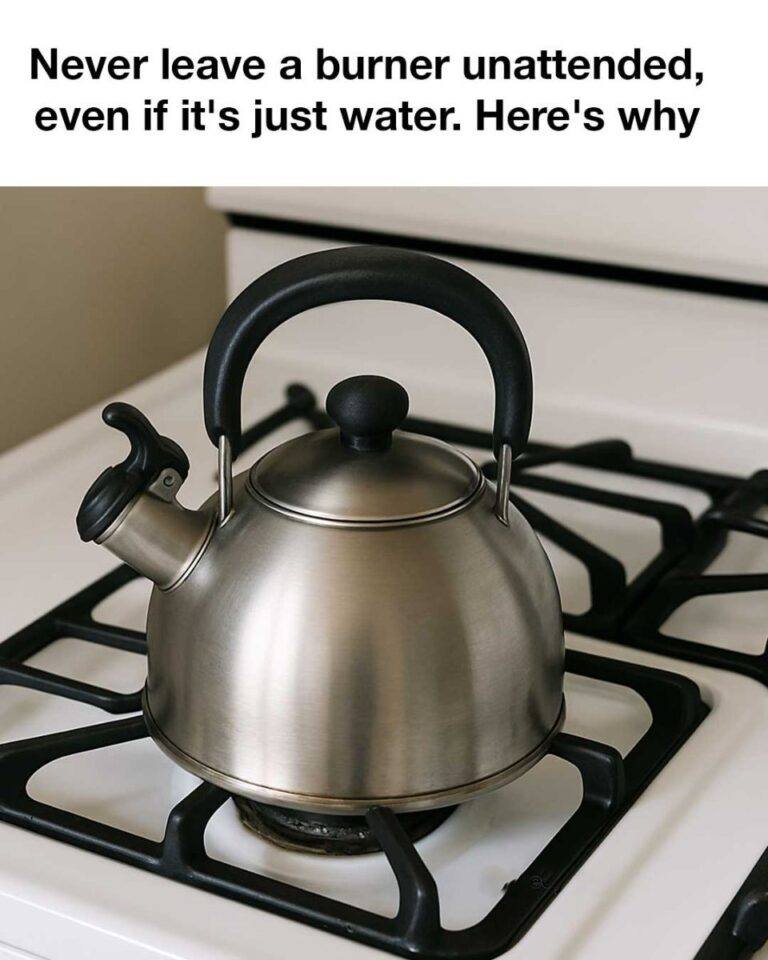In the hustle and bustle of daily life, it’s easy to overlook the small things, like leaving a pot of water to boil on the stove. However, this seemingly innocuous act can lead to dangerous consequences. Kitchen safety is paramount, and understanding the risks associated with unattended burners is crucial for preventing accidents.
While it might seem harmless to leave a pot of water unattended, the reality is that it can quickly escalate into a hazardous situation. From potential fires to damaging cookware, the implications of neglecting a burner are significant. This article delves into the reasons why you should never leave a burner unattended, even if it’s just water.
1. The Science Behind Boiling Water
Boiling water is a simple process that involves heating water to its boiling point, which is 100°C (212°F) at sea level. As water heats, it absorbs energy and eventually reaches a temperature where it transitions from a liquid to a gas, known as steam. This phase change requires a significant amount of energy, known as the latent heat of vaporization, which is approximately 2260 kJ/kg.
When water is left to boil unattended, it continues to absorb heat until all the water has evaporated. This process can happen relatively quickly, especially if the burner is set to a high temperature. Once the water has evaporated, the pot itself begins to absorb the heat, which can lead to dangerous consequences.
2. How Unattended Burners Can Lead to Fires
When a pot is left on a burner without water, the temperature of the pot can rise rapidly. If the pot is made of materials that can combust or degrade at high temperatures, such as certain non-stick coatings, this can lead to a fire. The ignition temperature of many common kitchen materials is well within the range that a dry pot can reach on a high burner.
Moreover, if there are any flammable materials nearby, such as kitchen towels or wooden utensils, the risk of a fire starting increases significantly. According to the National Fire Protection Association, cooking equipment is the leading cause of home fires, and unattended cooking is a major factor.
3. The Dangers of Evaporated Water and Dry Pots
Once all the water in a pot has evaporated, the pot itself is at risk of overheating. This can cause the pot to warp, crack, or even melt, depending on the material. For example, aluminum pots can melt at temperatures around 660°C (1220°F), which is achievable on a high burner.
Additionally, dry pots can emit toxic fumes if they are coated with non-stick surfaces. These fumes can be harmful to both humans and pets, particularly birds, which are highly sensitive to airborne toxins.
4. The Risk of Damaging Cookware
Leaving a pot on a burner without water can cause irreversible damage to cookware. Non-stick coatings can degrade, leading to flaking and the release of harmful chemicals. Stainless steel pots can develop discoloration and pitting, while cast iron can crack or warp.
Replacing damaged cookware can be costly, and the environmental impact of disposing of damaged pots and pans is significant. By avoiding unattended burners, you can extend the life of your cookware and reduce waste.
5. Energy Waste and Environmental Impact
Leaving a burner on unnecessarily wastes energy, contributing to higher utility bills and increased carbon emissions. A typical electric stove burner uses about 1.5 kWh of energy per hour, which can add up over time if left unattended.
Reducing energy waste is an important step in minimizing your carbon footprint. By being vigilant about turning off burners when they are not in use, you can conserve energy and contribute to a more sustainable environment.
CONTINUE READING ON THE NEXT PAGE 🥰💕

